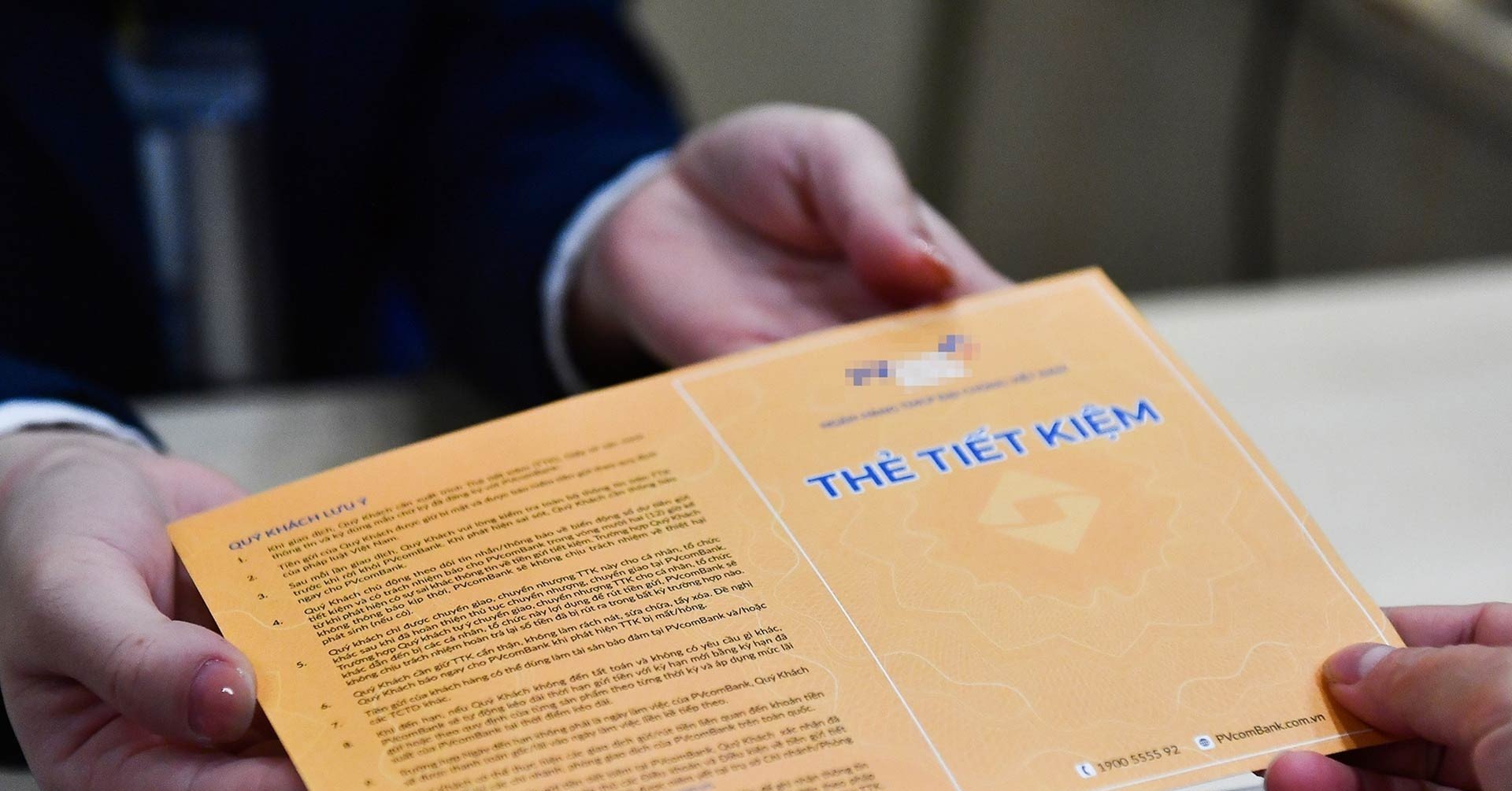Savings books help customers prove their deposit at the bank. If they lose their savings books, customers need to understand the following procedures.
What to do when you lose your savings book
A savings book is a type of certificate showing the customer's deposit at the bank, which clearly states information about the deposit amount and the interest rate to be received after a certain period of time.
Nowadays, many people choose to open a savings account at the bank to manage their finances safely, effectively and profitably.
When losing a savings book, customers need to follow these steps to solve the problem:
Step 1: Notify the bank
As soon as you discover that your savings book is lost, you need to notify the bank by calling the hotline or going directly to the transaction counter. This should be done as soon as possible so that the bank can freeze the savings book to avoid risks.

Step 2: Complete the procedure for losing your savings book at the bank.
After notifying the bank, customers need to go to the nearest transaction office to carry out procedures to declare the loss of the savings book.
For convenience in completing procedures, customers should prepare all valid identification documents (citizen identification card/valid passport) and go directly to the bank's transaction office. Here, customers will be guided to fill out the information in the lost book declaration form. After that, the bank will record the information and begin the request processing process.
Step 3: Wait for the bank to process
After receiving the notification, the bank will verify and process the request. This process can take from a few minutes to a few days, depending on the bank's regulations.
When the lost savings book has not been closed and is not in a frozen state, the bank will approve the procedure for the customer to withdraw money or reissue the savings book. The customer will be notified by phone or email when the new book is ready to be collected.
Note that when withdrawing money, customers need to present a lost notice with the bank's signature instead of a savings book and carry out normal withdrawal procedures.
2. Notes when depositing money and keeping savings books
Savings books are one of the most important assets when saving. Therefore, to ensure safety and protect your rights, customers need to pay attention to the following issues:
First, you need to keep your savings book properly. Because it is an important document, your savings book needs to be protected from being torn, damaged or lost. You should keep your savings book in a cool place, away from moisture. It is best to use a nylon bag or cover your savings book tightly to avoid dust and moisture.
Note that you should not share your savings book information. Information related to savings books is very sensitive, so you should not share it with strangers or on social networks. Because this can cause customers to get into unwanted trouble.
Another thing to note is to regularly monitor your savings book. Customers need to regularly monitor their savings book to detect early signs of abnormalities such as torn, lost, stolen savings books... In addition, you should use the bank's application to check whether the savings book is accurate or not.
Most banks provide Mobile Banking/Internet Banking applications to make it convenient for customers to make transactions and view account information at any time.
Notify the bank immediately if you discover any errors or problems with your savings book. If you discover any errors or problems with your savings book, notify the bank immediately for timely support and resolution.
(Synthesized from websites of Hong Leong, Eximbank, Techcombank, VIB)

Source: https://vietnamnet.vn/can-lam-gi-neu-mat-so-tiet-kiem-2385554.html


![[Photo] Prime Minister Pham Minh Chinh chairs the first meeting of the Steering Committee on Regional and International Financial Centers](https://vstatic.vietnam.vn/vietnam/resource/IMAGE/2025/4/3/47dc687989d4479d95a1dce4466edd32)
![[Photo] General Secretary To Lam receives Japanese Ambassador to Vietnam Ito Naoki](https://vstatic.vietnam.vn/vietnam/resource/IMAGE/2025/4/3/3a5d233bc09d4928ac9bfed97674be98)
![[Photo] Ho Chi Minh City speeds up sidewalk repair work before April 30 holiday](https://vstatic.vietnam.vn/vietnam/resource/IMAGE/2025/4/3/17f78833a36f4ba5a9bae215703da710)
![[Photo] Capital's youth enthusiastically practice firefighting and water rescue skills](https://vstatic.vietnam.vn/vietnam/resource/IMAGE/2025/4/3/3f8481675271488abc7b9422a9357ada)
![[Photo] A brief moment of rest for the rescue force of the Vietnam People's Army](https://vstatic.vietnam.vn/vietnam/resource/IMAGE/2025/4/3/a2c91fa05dc04293a4b64cfd27ed4dbe)
![[Photo] Prime Minister Pham Minh Chinh chairs meeting after US announces reciprocal tariffs](https://vstatic.vietnam.vn/vietnam/resource/IMAGE/2025/4/3/ee90a2786c0a45d7868de039cef4a712)























































































Comment (0)